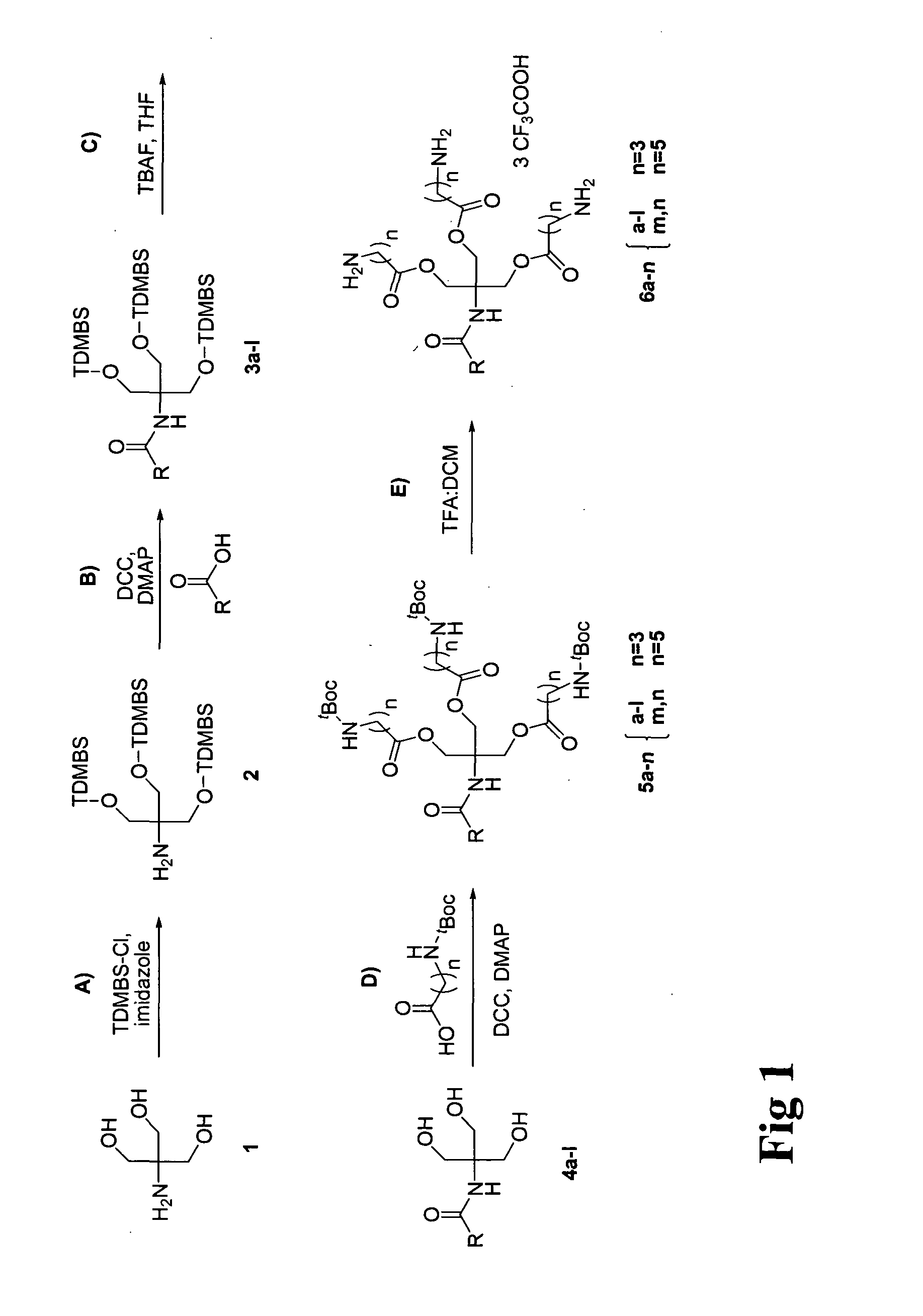Cationic lipids
- Summary
- Abstract
- Description
- Claims
- Application Information
AI Technical Summary
Benefits of technology
Problems solved by technology
Method used
Image
Examples
Embodiment Construction
[0029]The present invention provides new cationic lipids with an architecture that is susceptible to degradation under physiological conditions to afford relatively non-toxic components. The degradation is facilitated in particular in the context of transfection into cells by the presence of the ester moieties that are susceptible to hydrolysis under mildly acidic conditions. This occurs during cytoplasm entry by lipoplexes during endocytosis as a consequence of the natural drop in pH that occurs in the endosome: whilst the endosomal pH is initially that of the extracellular medium (approximately 7.2 to 7.4) the pH is progressively lowered to approximately 5.0 by ATP-dependent proton pumps within the endosomal membrane. In addition ester bonds are susceptible to hydrolysis by intracellular lipases once endocytosis is complete.
[0030]Separately, the lipophilic component, which is joined to the linking moiety by a nitrogen-containing linkage, is susceptible to release by degradation at...
PUM
| Property | Measurement | Unit |
|---|---|---|
| Composition | aaaaa | aaaaa |
| Ratio | aaaaa | aaaaa |
| Acidity | aaaaa | aaaaa |
Abstract
Description
Claims
Application Information
 Login to View More
Login to View More - R&D
- Intellectual Property
- Life Sciences
- Materials
- Tech Scout
- Unparalleled Data Quality
- Higher Quality Content
- 60% Fewer Hallucinations
Browse by: Latest US Patents, China's latest patents, Technical Efficacy Thesaurus, Application Domain, Technology Topic, Popular Technical Reports.
© 2025 PatSnap. All rights reserved.Legal|Privacy policy|Modern Slavery Act Transparency Statement|Sitemap|About US| Contact US: help@patsnap.com



